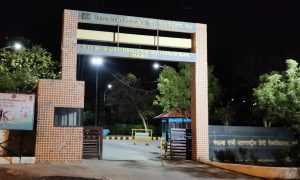Conservation of historical relics – monuments, sites and remains is a crucial part of nation-building to uphold and preserve the ancient heritage. World Heritage is celebrated every year on 18 April to emphasise restoring and preserving the diverse cultural heritage that marks memories of the past to make the world what it is.
“Value, protection, conservation, interpretation and fostering India’s unique, diverse Archaeological Heritage” is the government’s major concern in order to channel and continue cross-cultural linkages at the international level. In India, this is also significant for nation-building and is a testimony to the country’s cultural identity at the national level and across the globe.
In the Budget 2021, the Government of India provisioned Rs. 5.10 Crore under revenue subhead ‘Archaeological Exploration and Excavation – other charges’ development of five Iconic sites of India, namely, 1. Hastinapur (Uttar Pradesh), 2. Rakhigarhi (Haryana), 3. Sivasagar (Assam), 4. Dholavira (Gujrat) and 5. Adichanallur (Tamil Nadu).
Last year, in the Budget of 2020, the Government had announced the preservation of these selected sites because of their Outstanding Archaeological/ Historical Value. Each of these sites exhibit unique aspects of Indian history and cultural development containing invaluable archaeological deposits that can be showcased for public display.
Therefore the government has also proposed to set up an Indian Institute of Heritage and Conservation under the Ministry of Culture and develop five archaeological sites as “iconic sites” with onsite museums.
The development work of these 5 sites viz., Rakhigarhi, Hastinapur, Shivsagar, Dholavira and Adichanallur, as iconic sites with on-site Museums is being carried out by the Archaeological Survey of India (ASI).
ASI is a premier authority, responsible for the archaeological research and protection of the cultural heritage of the nation. It looks into the regular maintenance of ancient monuments, archaeological sites and remains that are of national importance.
Exemplary Historical Relevance of these 5 Sites
Rakhigarhi
Rakhigarhi, situated in Haryana’s Hissar district is known to be one of the five most prominent and largest townships of the ancient Harappan civilisation.
Between 2013 and 2016, excavations were carried out at the cemetery in Rakhigarhi by a team of Indian and South Korean researchers led by Vasant Shinde of Deccan College, Pune. In one of their excavations, the skeletal remains of a couple were discovered.
Interestingly, of the 62 graves discovered in Rakhigarhi, only this particular grave consisted of more than one skeletal remains and of individuals of the opposite sex together.
The site gained prominence in 2019 when a study of DNA samples of the skeletons was found there, showing no traces of the R1a1 gene or Central Asian ‘steppe’ genes (loosely termed as the ‘Aryan gene’).
Back in 2012, it was declared as one of the 10 most endangered heritage sites in Asia because of the encroachments into the area by the Global Heritage Fund.
Hastinapur
Hastinapur, located in Meerut, is considered to be the capital of the ‘Kuru Kingdom’ and is a part of ASI’s list of ‘Mahabharata sites.’
It also finds mention in ancient Jain texts.
Even though archaeologists claim to have found deposits of a layer associated with the Mahabharata time period, they have failed to find it in a stratified form. Excavations at the discovered Mahabharata sites, including Hastinapura, still seek to find a link.
One of the most significant discoveries made at this site was of the “new ceramic industry”, named the Painted Grey Ware, which as per the report represented the relics of the early Indo-Aryans.
Sivasagar
This site is named after a lake in the city of Sivasagar in Assam, which was the epicentre of the Ahom kingdom that existed in the Brahmaputra Valley between the 13th and 19th CE.
It hosts burial mounds of the kings who ruled the Ahom kingdom for 600 years, which in 2014, were made a part of the world heritage sites.
The excavations carried out at the Karenghar (Talatalghar) complex in Sivasagr between 2000 and 2003 led to the discovery of buried structures in the north-western and north-eastern side of the complex.
Another excavation was carried out in 2007-2008 at the Garhgaon Raja’s palace site in the Sivasagar district wherein a burnt brick wall running in north-south orientation was discovered, along with the remains of two huge circular wooden posts.
Dholavira
Just like Rakhigarhi, Dholavira, located in Gujarat at the Khadir island of the Rann of Kutch, is also one of the most prominent sites of the Harappan civilisation.
Dholavira is famous for one of the most ancient ‘complete water systems’. The people of Harappan civilization, who lived there for an estimated 1,200 years, were noted for their water conservation system using rainwater harvesting techniques in an otherwise parched landscape.
Adichnallur
This is a site located in Thoothukudi district of Tamil Nadu, believed to be dating back to 696-905 BC, making it the oldest site in the state so far.
Adichnallur was first discovered in 1876.
Known to be an “urn-burial site”, the site has gained attention because of three important findings: the discovery of an ancient Tamil-Brahmi script on the inside of an urn containing a full human skeleton, a fragment of broken earthenware, and the remains of living quarters.
Around round 169 clay urns containing human skeletons, nearly 3,800 years old, were unearthed here in 2005.
Moreover, several gold diadems with a hole on each end for tying them around the forehead were also discovered in Adichnallur, along with a number of bronze figurines of buffalos, goats tigers, and elephants.
India has a rich treasure of housing the world’s most ancient archaeological discoveries, including multiple ancient Civilizations (Indus Valley or Harappan Civilization), religions (Hinduism, Buddhism, Jainism), monuments, historical remains, etc which puts a huge responsibility on the government to conserve and preserve these archaeological remains that represent the ancient cultural heritage of India.






















 WhatsApp us
WhatsApp us
Pingback: see this here
Pingback: Study in Africa
Pingback: where to buy vape cartridges in europe